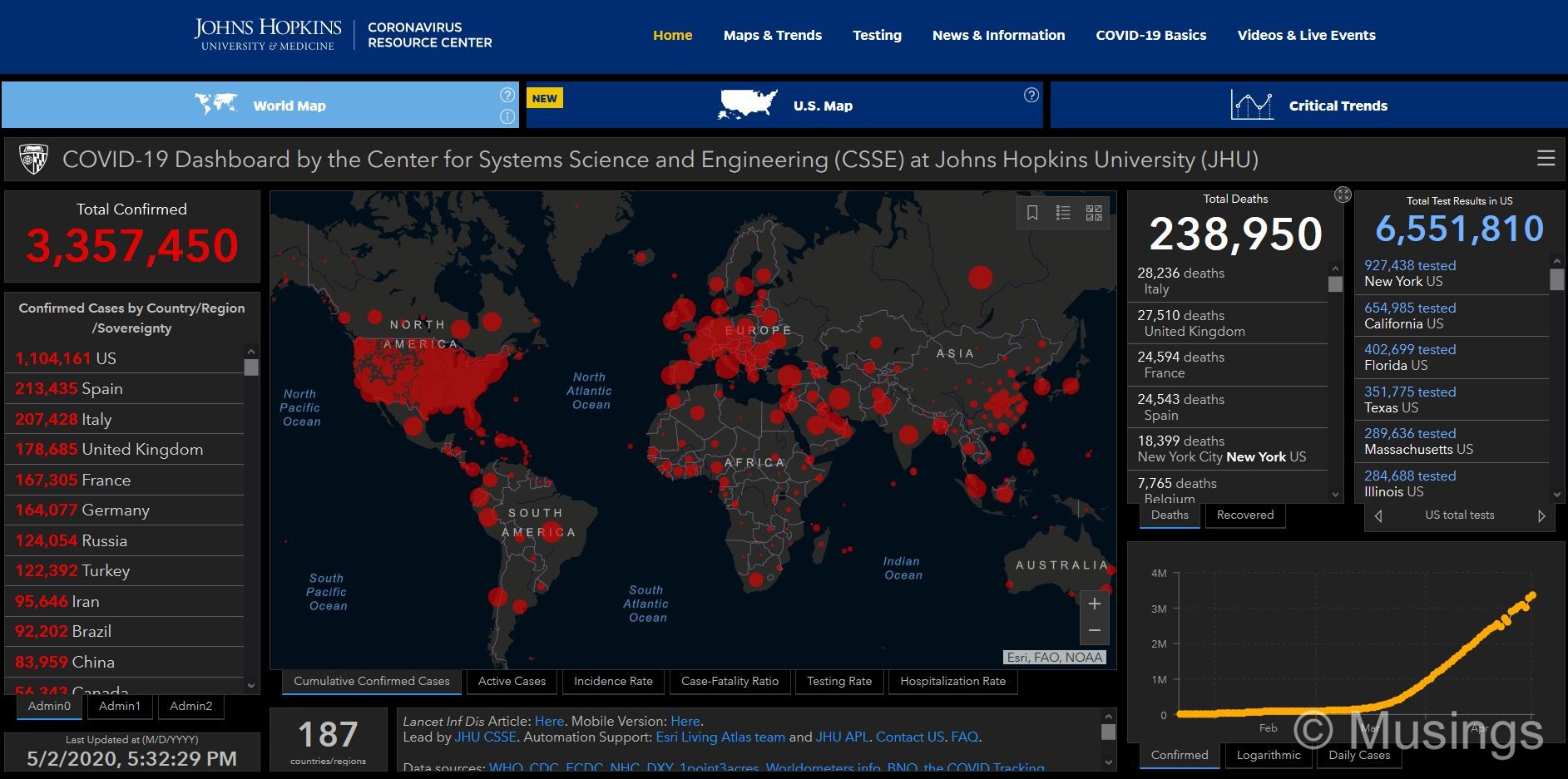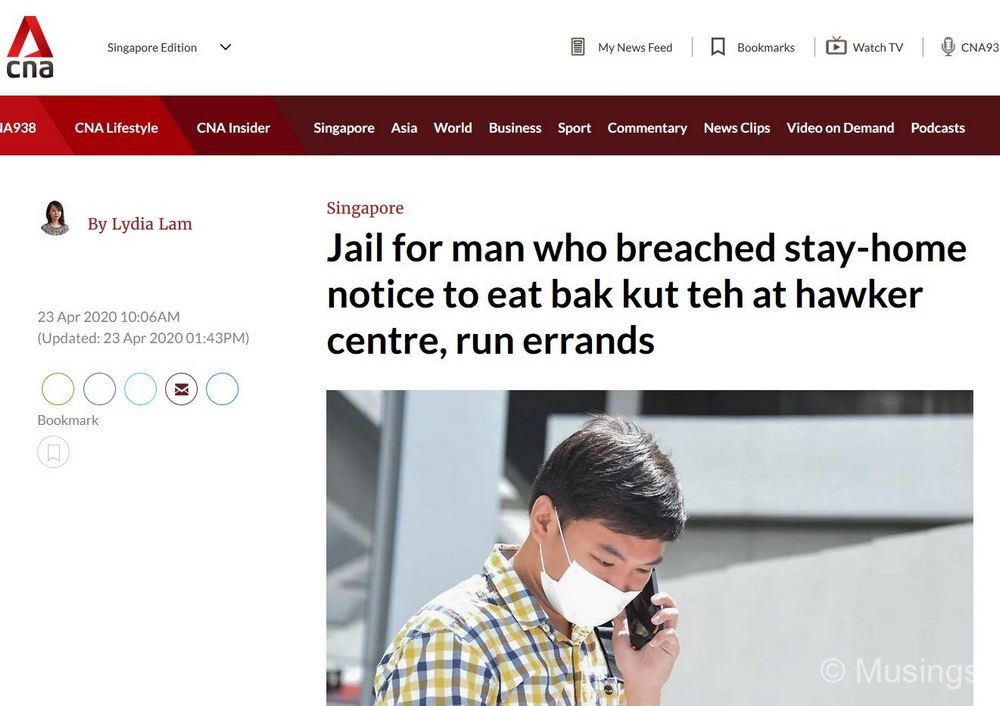The Covid-19 pandemic has pretty much consumed the world. Who would have thought three months ago – unless you were in China – that much of the world would be living today in early May under a variety of regulations, including stay home notifications, embargoes at borders, arrests and heavy fines for non-compliance to social distancing rules, full-board work from home, and selected grocery items that we once took for granted all but disappeared from shelves? And that’s not counting that the number of confirmed cases worldwide has crossed 3.3 million at this point of writing, of which 238,000 has died from the virus.
That’s the strange world we live in now, and I figured it’s just as well I write something about it – so that in a year’s time when I look I can marvel at how things have changed during this first half of 2020.
Singapore, likely because we were caught flat-footed during the SARs pandemic 17 years ago in 2003, took no chances this time round. From January, it was closely monitoring the rapidly-changing circumstances in Wuhan. And by late Jan, it had already implemented restrictions at key facilities around the island. Soon after I returned to work after my dad’s passing and funeral arrangements had been completed at the start of February, my workplace was already well under-way with various plans to react to persons who become infected cases, including getting us trained on contact tracing, communication SOPs, and business-continuity planning, including split-teams and full-board work from home arrangements.

The first milestone reached was on the first Friday of that month, when the island announced it was moving to DORSCON level orange. There was a round of panic-buying in many supermarkets, and especially of toilet paper – and it didn’t take long for social media to begin mocking these hoarders of it! It was a little amusing also to see that this sudden toilet-paper syndrome wasn’t unique to Singapore, and there was even a viral video of women fighting over toilet paper roll packs in Australia. But the restrictions continued to pile on in the weeks that followed. The supermarket chains started limiting the number of toilet paper rolls one could buy, then it was pasta, canned food, rice etc. There was also panic buying of surgical masks and hand-sanitizers (briefly), and stories were abound on social media of the huge mark-ups of the former.
Then at the end of March, Singapore announced that all schools would be going home-based learning once a week. And just a few days later in early-April when there was no respite on the number of confirmed cases here, the government announced a ‘Circuit Breaker’ period where all but the most essential services were ordered shut or to move to online space. All schools were informed to do full home-based learning for an entire month. Workplace outside essential services were ordered to implement work-from-home for its employees. Restaurants and F& establishments were required to rearrange seating to ensure social distancing, before they were ordered to cease all dine-in activities altogether. And this included eventually personal grooming (e.g. barbers), and even bubble tea shops that sell those overly-sugary drinks that are comfort food to many.
It’s interesting though to see how most of Singapore has reacted to these changes: and in a few words, better than I thought. Most of us were resigned to a life under siege, and I reckon this is on account of many factors: including fairly widespread awareness of how badly the virus was hitting China in February, then Europe and finally the US in the subsequent months, coupled with a fear of Singapore facing the same fate. The comparatively stronger reactions happened though in a couple of places: for instance, there was that collective sigh of despair when McDonald’s announced it was suspending operations after a couple of their employees tested positive. That meant Singaporeans had to turn elsewhere to get their fix of junk food, which resulted in Burger King for instance asking for patience as it suddenly had to deal with huge spikes in delivery orders. Or when Singapore ordered the bubble tea outlets to shut by the end of the work-day, which resulted in long queues immediately formed for fans to get their last drink. And arguments even broke out with stakeholders under pressure – which led to an arrest of one specific individual even. Or when home bakers found out that there were likewise curbs placed on their operations, which led to a petition asking for those restrictions to be lifted, and a Minister had to even come out to explain it even. Clearly, there’s no coming in between Singaporeans and food.
All this also doesn’t mean there weren’t individuals who possibly felt that the law didn’t apply to them or thought they could get away with it. For instance, there was that returning Singaporean who was served a stay-at-home notice upon arrival back in Changi deciding to venture out for a final happy meal of pork rib tea soup. He ended up getting arrested and then jailed for what turned out to be an extremely expensive bak kut teh meal for him. Or, just recently, the resident at a certain condo in Bukit Timah who invited a male visitor to his apartment unit to stay overnight, when such had already been disallowed by law. That resulted in a tough crackdown to enforce rules in that condo, including disabling card access for residents. There were plenty of funny jokes cracked on that, including ones centered on the male anatomy and how much that cost the village.

It was also interesting to observe the range of responses among residents over where I’m staying at – The Minton. Some residents quickly heeded and understood the dire warnings the Government put out earlier on, and urged neighbours at large to be responsible. A few neighbours resisted the implied peer pressure involved, and one even posited happy thoughts and suggested that positive thinking and a don’t-be-bothered-by-others attitude will be OK. That of course will not fly with a pandemic like Covid-19, on account that the virus by this point was already clearly determined to be be extremely contagious – i.e. spreads extremely easily – and also asymptomatic – i.e. you may not show symptoms for a while. In my perspective, if it takes social and community pressure for everyone to be responsible, so be it – especially since by this point, there were already numerous Covid-19 clusters started by infected individuals.
The early measures that Singapore adopted were widely praised, with Harvard epidemiologists even describing our our response mechanisms as a “gold standard of near-perfect detection”. That’s despite our key ministers repeatedly warning our population not to be complacent, and reminding that it was just too early to tell if we were past the danger zone. As it turned out, our number of confirmed cases and therefore deaths were kept very low – until a huge outbreak started after the first week of April among migrant workers here, ostensibly in part because of relatively stressful living environments they are accommodated in. For the following weeks, we started seeing hundreds, and at times even more than a thousand, new cases confirmed every day. Some news media outlet has said that Singapore’s ‘gold standard’ image has been tarnished, while others simply pointed out that this was a warning sign to other countries how vulnerable sectors of a population can be where an outbreak happens.
As of today, the vast majority of the approximately 17,500 cases are from migrant workers – though as many of these workers are in very good health and also that old in age, our death rate remains at just 16 as of today. The outbreak among migrant workers has in turn led to a realization of how much we depend on them and how much better a job we need to do to also care for them. I hope when this pandemic is over, we won’t return to where we were.
Continued in the next post!
Sorry to read about your Dad.
Thank you.